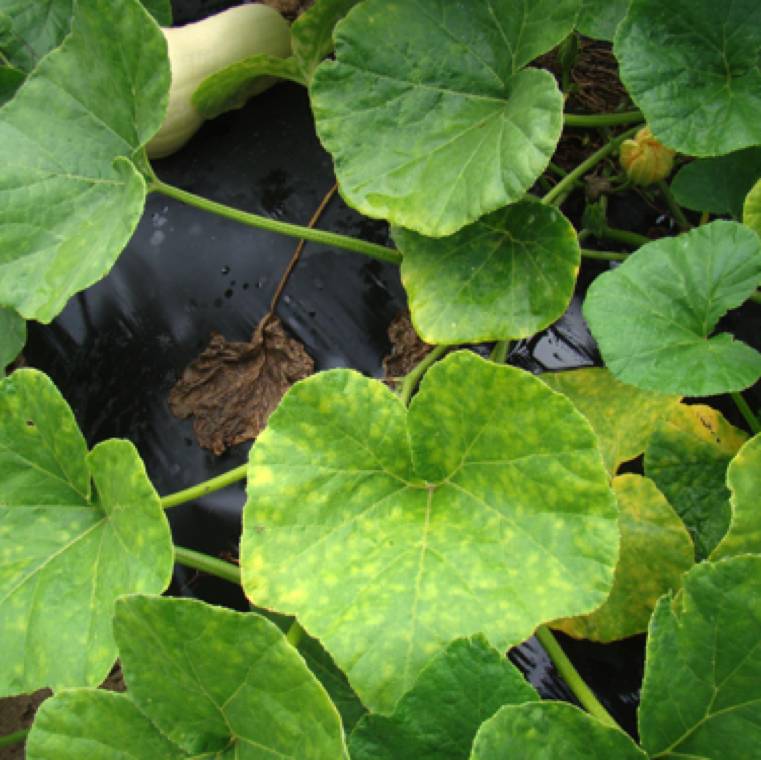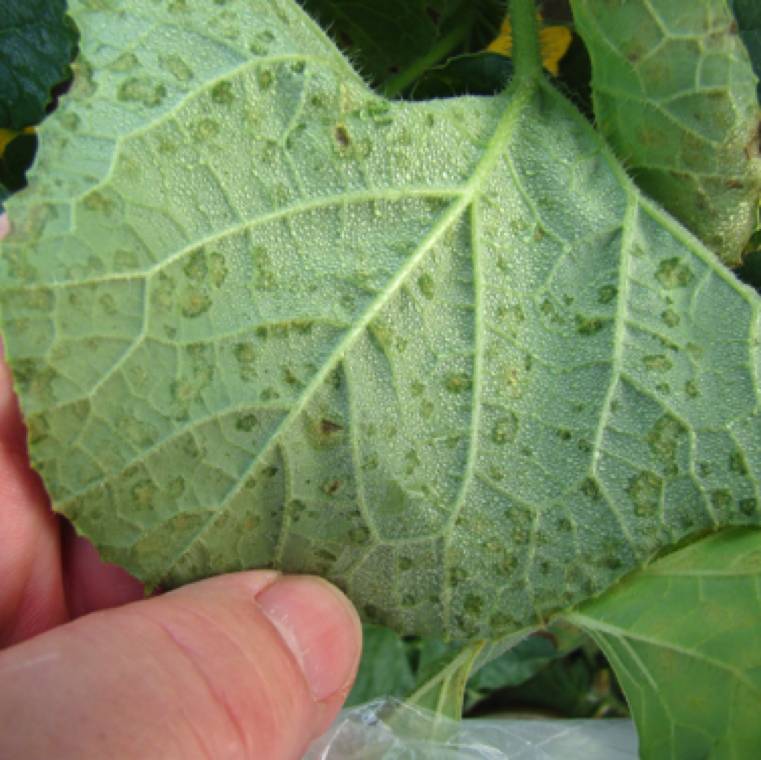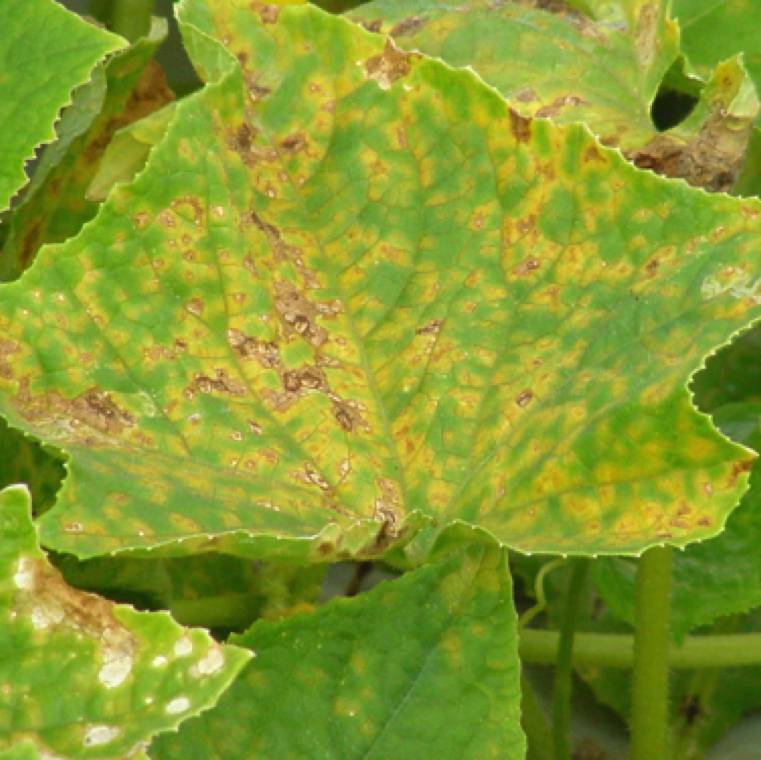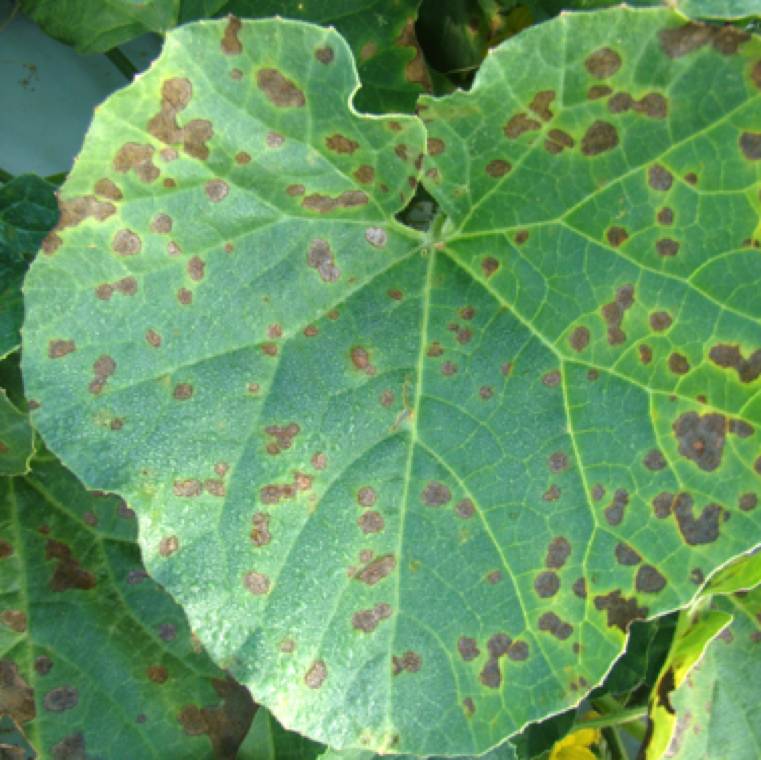Downy mildew is a significant foliar disease affecting cucurbits, caused by an obligate parasitic oomycete pathogen. This pathogen relies on a host plant to survive through harsh winter months, making it a persistent issue in warmer growing seasons.
Symptoms:
- Lesion Appearance: Downy mildew primarily manifests as water-soaked lesions on the underside of leaves. These lesions are typically yellow at first and gradually turn necrotic as the infection progresses.
- Cucumber: On cucumbers, lesions are angular with well-defined borders, often following the veins of the leaf. The disease starts on older, lower leaves and moves upwards to newer, distal leaves.
- Cantaloupe: The disease also affects cantaloupe, where yellow spots evolve into large necrotic areas. The transition from yellow to necrotic is pronounced, resulting in significant leaf damage.
- Watermelon: In watermelon, downy mildew symptoms are distinct. The disease begins with small yellow spots that quickly develop into dark, necrotic areas.
Downy mildew is best managed through early detection, maintaining proper field sanitation, and applying appropriate fungicides. Regular monitoring is essential to control its spread and reduce crop damage.









